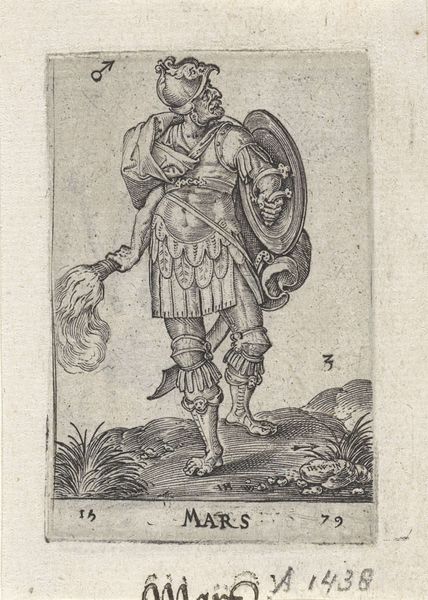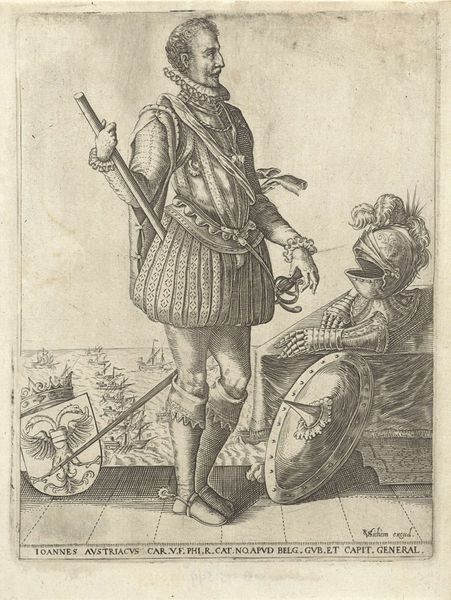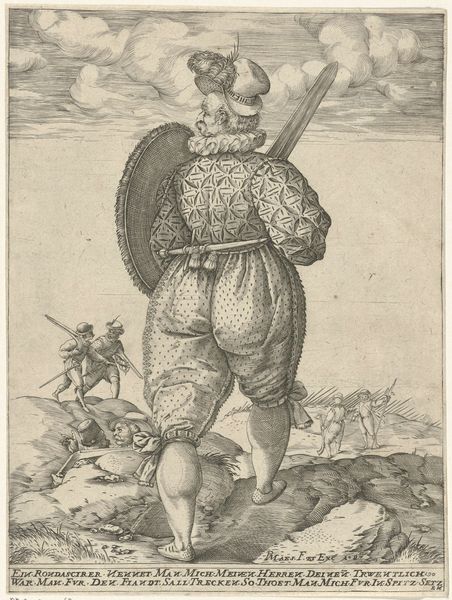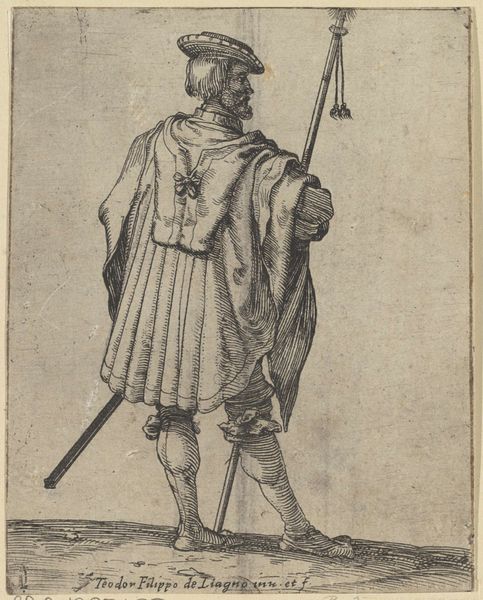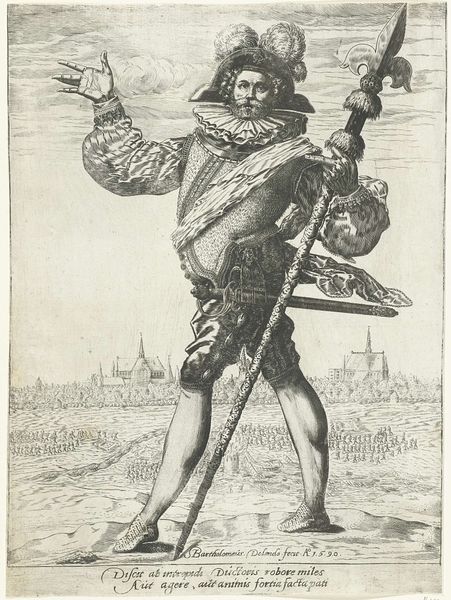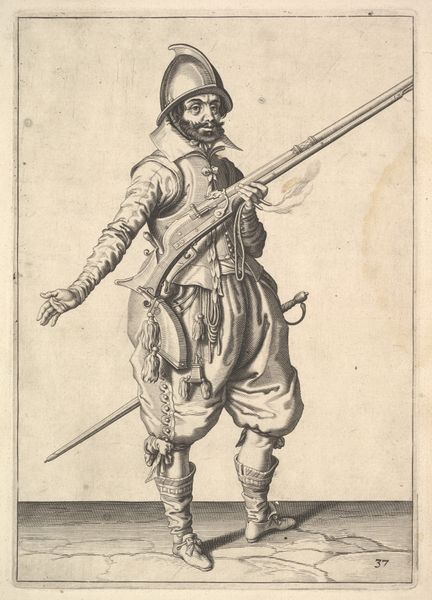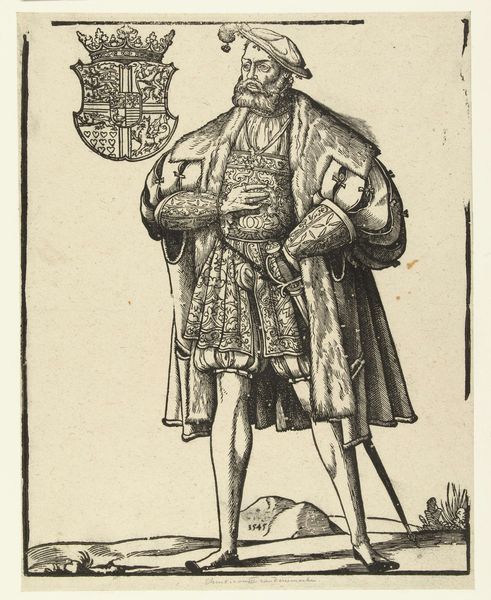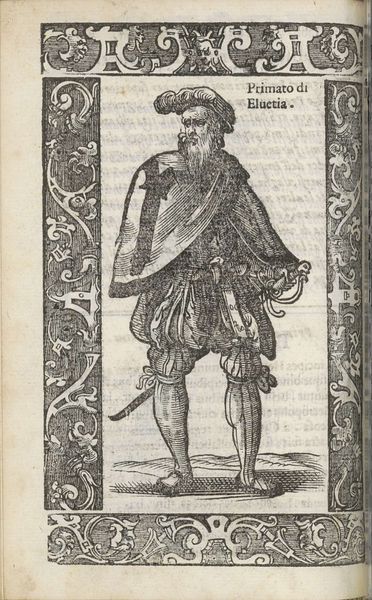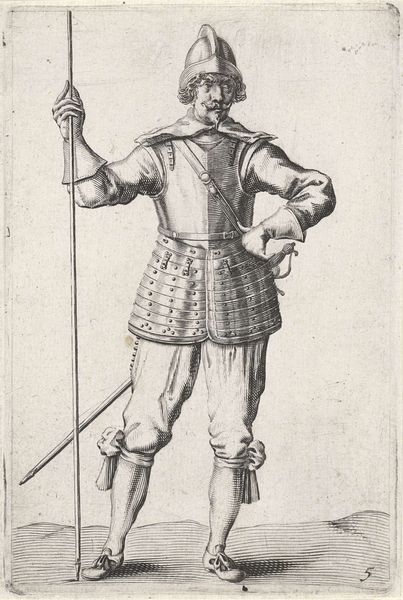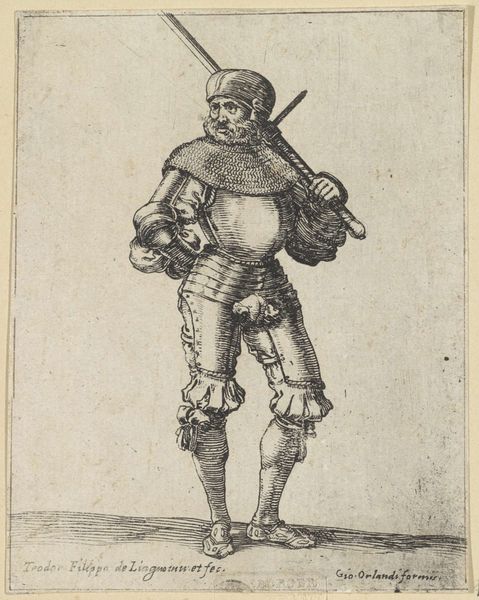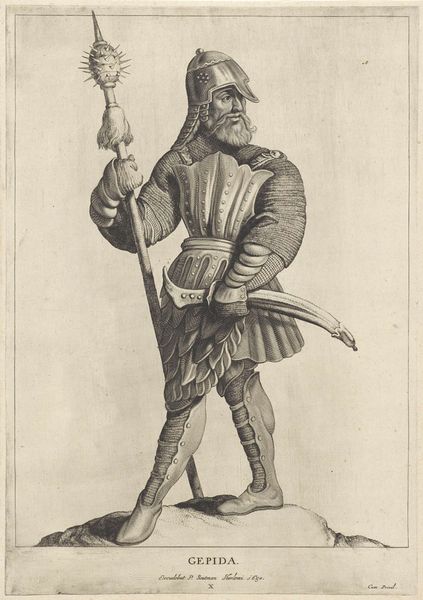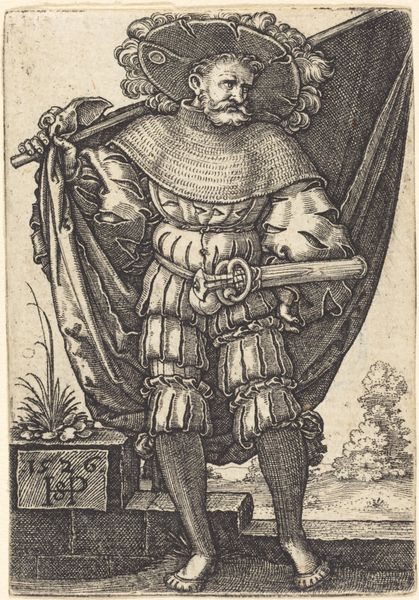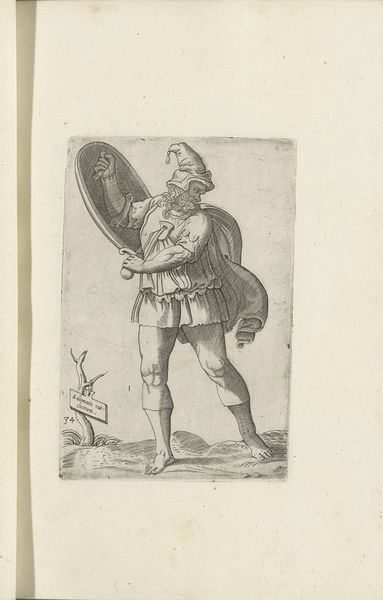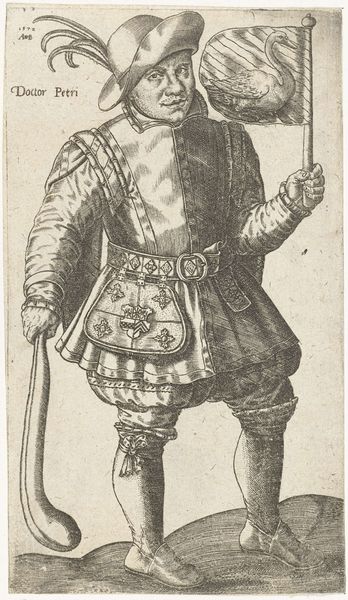
drawing, paper, ink
#
portrait
#
drawing
#
mannerism
#
figuration
#
paper
#
ink
Dimensions: height 116 mm, width 87 mm
Copyright: Rijks Museum: Open Domain
Editor: This is "Soldaat," a drawing made with ink on paper by Teodoro Filippo di Liagno sometime between 1600 and 1650. I'm really struck by the detail in the etching, particularly the way the artist rendered the folds and textures of the clothing. How might we interpret the choices made in creating this work, looking at it through the lens of material and process? Curator: What is fascinating to me is how this image replicates and, arguably, democratizes access to a soldier. Notice the precision of the etching technique. How does the method of reproduction – ink on paper, allowing for multiples – shift the understanding of the portrayed subject, taking a soldier out of the battlefield and making him a commodity of visual consumption? Editor: That's interesting, this method democratizing it but making it a commodity at the same time. It almost seems like early advertisement or even propaganda? Curator: Precisely. Consider the broader context. Prints were a vital means of disseminating information and artistic ideas. Does the very act of transforming this soldier into a reproducible image reshape his value? How does it transform labour of soldiery into a spectacle? Does that distinction—of reproduction, labour and consumption—affect our understanding? Editor: So, the value isn’t just in the image itself, but also in the act of making it reproducible and therefore accessible and consumable by a larger audience. I never really considered the labor that went into etching, but that makes a lot of sense now! Curator: Exactly! And thinking about the type of paper, the quality of the ink – even these seemingly minor material considerations can offer valuable insights into the work's purpose and the audience it was intended to reach. Editor: Thinking about art in terms of material and process is more thought-provoking than I originally anticipated. Curator: Indeed, it exposes power dynamics inherent in art creation. A true materialist approach allows us to connect artistic choices with socioeconomic and cultural contexts.
Comments
No comments
Be the first to comment and join the conversation on the ultimate creative platform.
